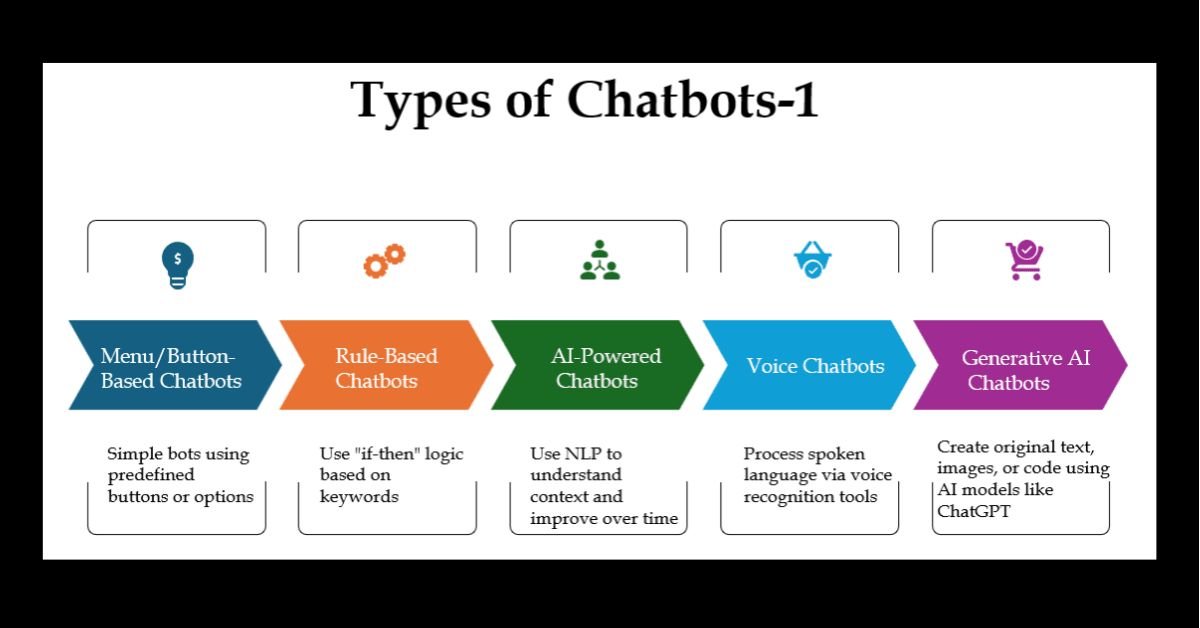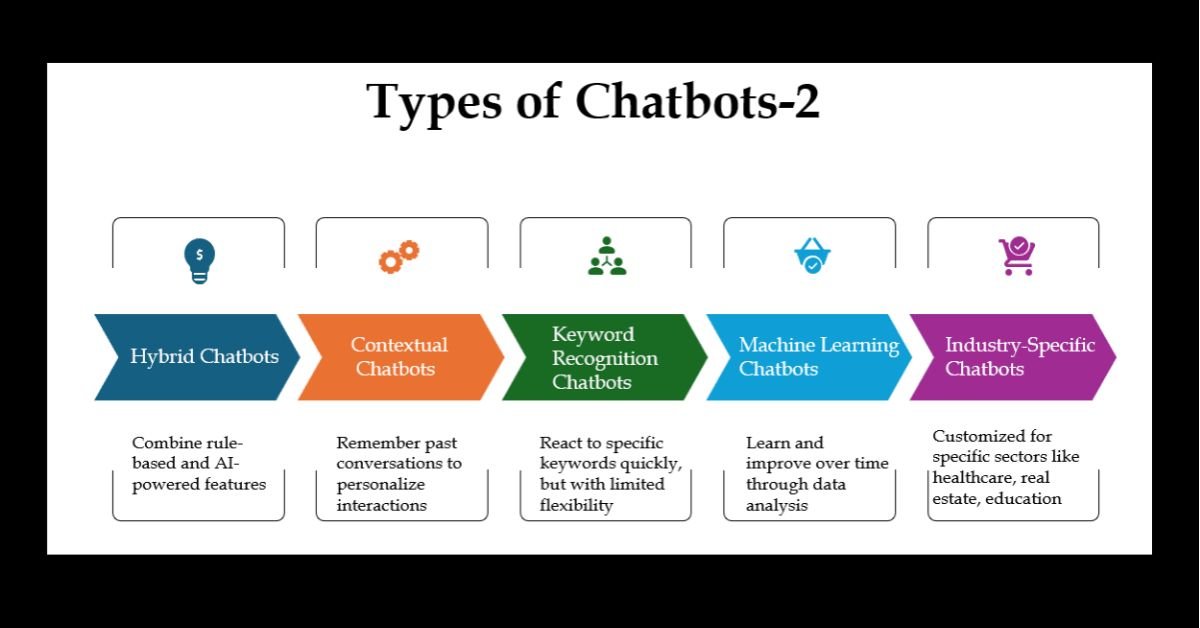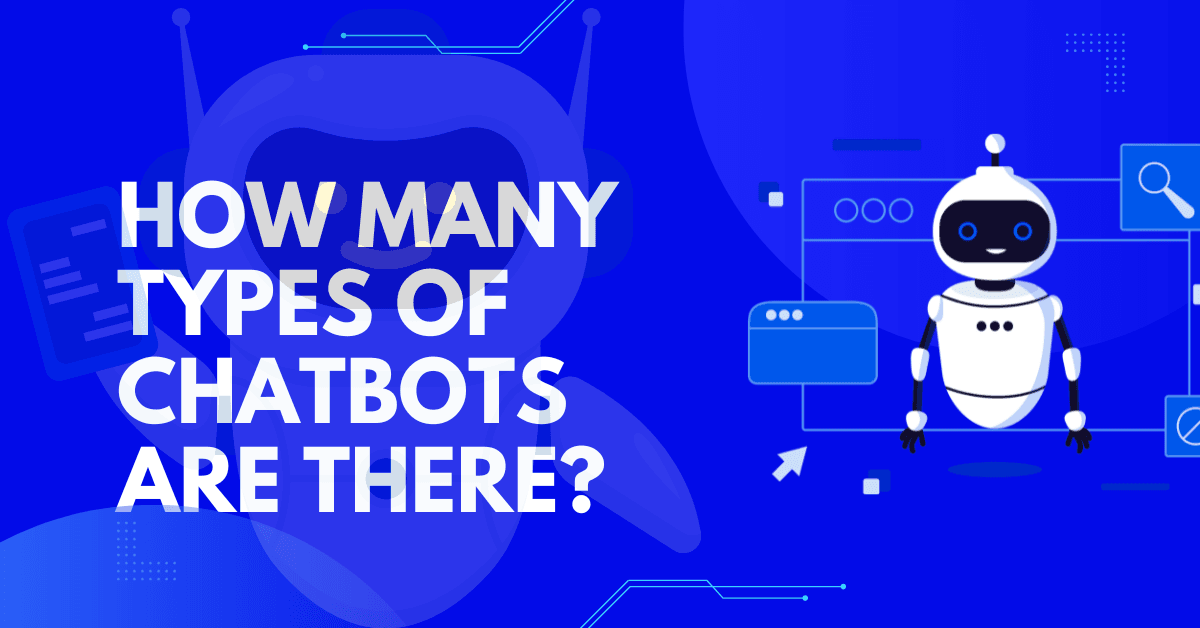Imagine being able to ask a customer service question and receiving an answer right now, with no waiting on hold or limited office hours. Or think about how easy it would be to schedule an appointment with a doctor. That’s the power of chatbots in action. These intelligent tools are changing the way people do business in banking, healthcare, retail, and even at home.
But one big question remains: how many types of chat interfaces are there, and what makes each unique?
In simple terms, this article explains the many types of chatbots, how they work, and where you are most likely to see them.
What is a chatbot?
A chatbot is computer software that can talk to you like a person, either through text or voice. You can think of it as a digital assistant that can answer questions, do things for you, or guide you.
It’s like talking to a clever computer that knows how to answer in a way that makes sense.
What Makes Chatbots Important?
Chatbots help organizations save time, money, and people while also providing customer care right away. Users obtain help right away instead of having to wait for a live representative.
- Gartner says that by 2027, over 25% of businesses will use chatbots as their main way to help customers.
- That’s why it’s important to recognize the different kinds of chatbots and what they can and can’t do.
If you’d like to explore how automated systems improve customer engagement in real business scenarios, check out our detailed guide: Automated Systems for Customer Engagement: Benefits, Examples & Best Practices.
Different kinds of chatbots
There are several types of automated systems. Let’s look at the ones that happen the most:

There are several types of automated systems, from simple ones that help you with menu buttons to more powerful generative AI models. Rule-based systems follow set scripts, whereas AI-powered and voice systems can interpret natural language and reply in a more flexible way. This change highlights how these tools are getting smarter and more like people instead of only following simple decision trees. The most recent phase is generative AI, which makes interactions feel more natural and human-like.
1. Chatbots that follow rules
These are the most straightforward. Like a “choose-your-own-adventure” novel, they follow rules or decision trees that have already been set.
- An airline chatbot can inquire, “Do you want to check the status of your flight, book a ticket, or talk to a real agent?”
- They work great for simple, repetitive jobs like answering questions or keeping track of orders, but they don’t work if you ask them something that isn’t in their programming.
2. Chatbots that use AI
These chatbots don’t just follow rules; they employ machine learning and natural language processing (NLP) to grasp the situation and respond in a smart way.
- ChatGPT and Google’s Gemini Advanced are two examples.
- They work best for complicated talks, helping customers, and giving tailored suggestions.
- A downside is that bad training might still give you wrong responses.
3. Chatbots that use both AI and rules
These bots have the best parts of both AI and rules. The bot employs rules that have already been set if AI can’t figure out a question.
- For instance, financial chatbots may employ AI to answer inquiries that don’t have a clear solution but switch to rules for secure transactions.
- Reliable and flexible, but harder to make and maintain.
4. Voice Assistants (Chatbots that talk to you)
These systems can recognize your voice and read material aloud.
- Siri, Alexa, and Google Assistant are among the examples.
- They are great for tasks that don’t require your hands, including playing music, setting reminders, or controlling smart home devices
- Limitation: They don’t always fare well in noisy situations or with accents.
5. Automated Systems on social media
These systems are widely used by businesses since they are embedded into apps like WhatsApp, Instagram, and Facebook Messenger.
- You can use Domino’s WhatsApp chatbot to order pizza, for instance.
- These bots are good at making rapid sales, getting leads, and keeping customers interested, but they can only do what the platform allows them to do.
6. Systems that work in context
These bots remember what you said to them before and utilize that information to provide you better, more tailored answers.
- For example, a shopping chatbots may remember what you bought last time and propose things that are similar.
- Many businesses utilize them for e-commerce, healthcare, and loyalty programs.
- Businesses need to be careful with data because of privacy issues.
7. Chatbots for Transactions
- Chatbots are designed to perform specific tasks from start to finish.
- Sending money, making reservations for a restaurant, and booking tickets are all examples.
- They help consumers through each stage of the process until it’s done.
- Limitation: They are only good for certain tasks and aren’t particularly adaptable.
8. Chat bots for a Specific Domain

Basic systems can answer simple questions, but sophisticated automated systems can do a lot more. Hybrid systems employ rules and AI, contextual systems remember what you’ve said before, and machine learning-powered systems get better all the time based on how users engage with them. Keyword recognition speeds up answers, while industry-specific systems give expert-level help in healthcare, finance, and law. These sophisticated techniques make these tools not only respond but also take action and tailor their responses to each user.
These chatbots are specifically designed for fields such as law, healthcare, or finance, which require specific tools.
For example:
- The legal chatbot helps write contracts.
- A healthcare chatbot evaluates symptoms and gives recommendations.
- They are outstanding in situations that are peculiar to their specialty, but not outside of it.
A Shocking Fact
Juniper Research says that by 2024, automated systems will save businesses more than $8 billion a year, mainly in banking and healthcare.
That’s a huge difference for such a “simple” instrument!
You can read more about this finding in the original Juniper Research Report on Chatbots.
How to Pick the Right Chatbot
Here are some brief tips to help you choose a chatbot for your business:
- What is your major goal? Is your primary objective to assist customers, generate sales, or provide information?
- Use bots that follow rules for simple, repetitive jobs.
- Select AI bots for complex or unique conversations.
- Make sure your bot works well with your app or website.
- Make sure the tone is welcoming and easy to comprehend.
- Always give people the choice to talk to a real person.
Last Thoughts
These systems are more than just a fad; they are changing how we use technology and do business. Every kind of automated system has a job, from basic rule-based systems to more complex AI assistants.
You’ll know precisely what sort of tool you’re interacting with the next time you buy tickets, order meals, or ask Siri for the weather.
What’s Next?
You might want to:
- Find out more about NLP (Natural Language Processing), which is what makes AI chatbots work.
- Find out how AI is changing customer service in a variety of fields.
- Use free chatbot tools to see how they operate.
Disclaimer: Images are for illustrative purposes only. They are simplified visual representations of chatbot categories and may not reflect all real-world implementations.
*Updated on September 3, 2025*
*Note: The term ‘chatbots’ appears in this text for clarity and context.

Hi, I’m Amarender Akupathni — founder of Amrtech Insights and a tech enthusiast passionate about AI and innovation. With 10+ years in science and R&D, I simplify complex technologies to help others stay ahead in the digital era.



